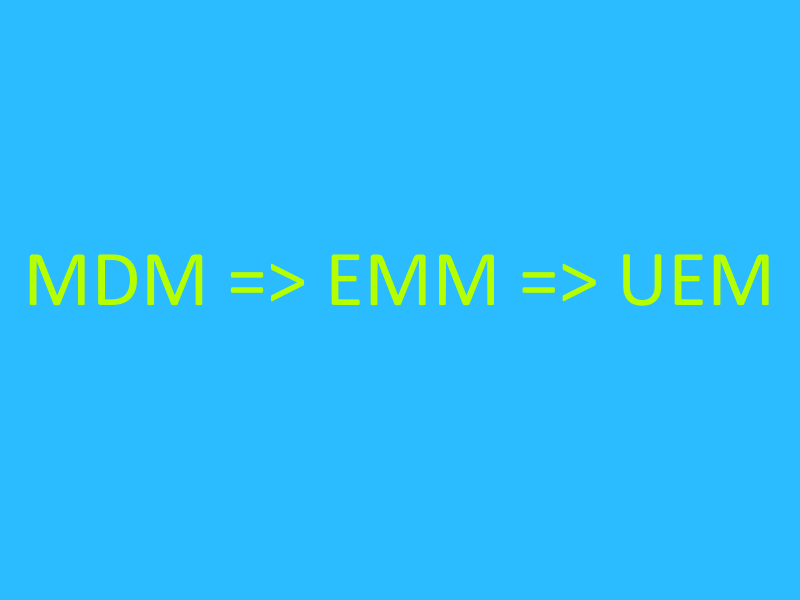
There is no doubt that enterprise technology has evolved rapidly over the last decade or so. And whilst this is generally a good trend, there is a major downside to such quick advances in the tech we use to run our businesses. It makes managing all of the applications, hardware and infrastructure increasingly difficult.
Mobile tech is a great example of this trend. We began by employing Mobile Device Management (MDM) to manage these devices. This was later superseded by Enterprise Mobility Management (EMM). And now, once again, things are changing, and Unified Endpoint Management (UEM) is now the latest buzzword.
UEM brings not only mobile devices but all other devices such as notebooks and desktop PCs under a single management platform. In theory a great concept, but how does it work? Let’s take a look at the key requirements for a UEM platform and find out.
Device Management is at the Core
Unsurprisingly, the driving feature of a Unified Endpoint Management platform is the capability to manage a full range of endpoint devices running a myriad of different operating systems.
This means managing desktop PCs and laptops running multiple versions of Microsoft Windows and Mac OS, as well as potentially Linux. Mobile devices also need to be covered. So multiple versions of Google Android and Apple iOS will need to be covered.
There is also a need to manage not only enterprise owned devices but also user-owned devices that are attached to the corporate network under a Bring Your Own Device (BYOD) type of situation.
Application Management is Crucial
Going beyond simple device management, a UEM platform needs to be able to manage all of the applications (including the operating system itself) installed upon the devices it is controlling.
This means keeping track of multiple versions of multiple applications, across multiple device types intelligently. By maintaining version data for every application across every device, and ensuring key security updates are applied. It also means providing the ability to manage application licenses, install new apps, or uninstall old apps.
Content & Collaboration
Collaborative applications and all content that users require to fulfill their day to day job of work should be managed from within the UEM platform.
This means that users will always have access to the collaborative tools they need out of the box, with zero configuration. A good example here is email. Every mail client should be configured via the UEM platform, without the user having to do anything.
Similarly, with content/data/information. If users need specific data to perform their jobs, such as technical manuals, process manuals or suchlike, these should be made available in a standard format via the UEM platform. Pre-loaded onto devices as required.
Security and Compliance go Hand in Hand
A comprehensive UEM platform needs to manage all security considerations across the entire range of devices, based on the security and data privacy regulation that the enterprise is required to be compliant with. This includes generating and maintaining a full audit trail of every security related management action taken across every device.
Detailed Reporting is a Requirement
Being able to interrogate the current state of devices managed by the UEM platform, and produce intelligent reports is a must have feature. Only a highly granular reporting function will allow for accurate, up to date reporting of the current state of the device pool.
For example, it should be possible to produce reports that detail any current security vulnerabilities devices are exposed to. Or application licensing issues faced by the overall device pool.
Bringing in IoT
Current Unified Endpoint Management technology can and does manage devices such as laptops, desktops, smartphones, and tablets. But as the IoT comes more into play, there will be a need to manage a diverse range of new devices types such as wearables, smart watches, etc. Only once this is achievable can a UEM platform fully justify the term “unified”.

